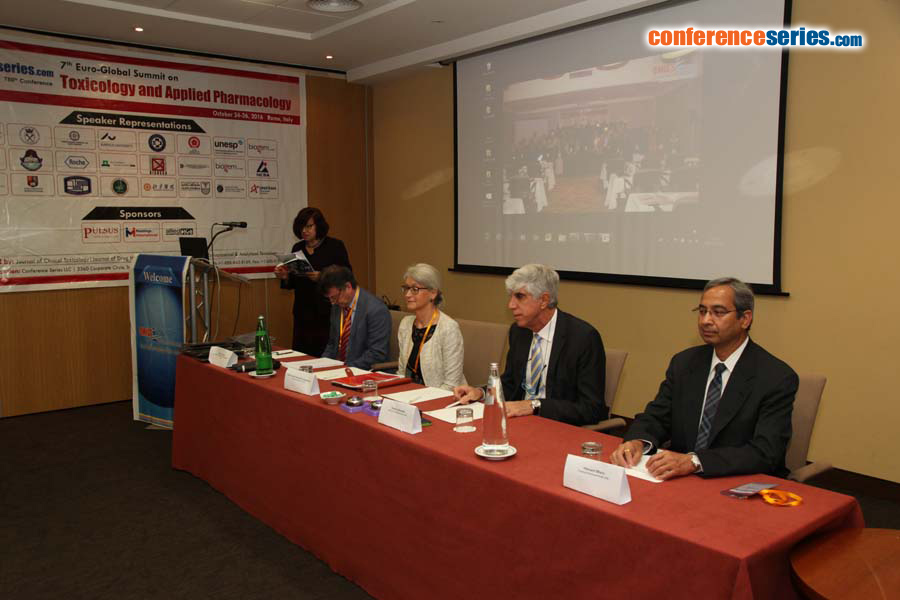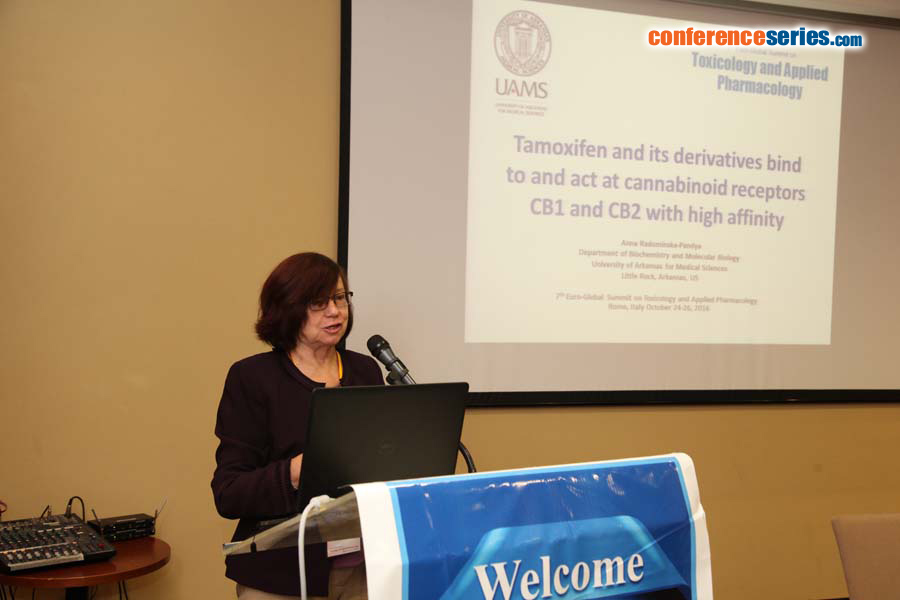Anna Radominska Pandya
University of Arkansas for Medical Sciences, USA
Title: Tamoxifen and its derivatives bind to and act at cannabinoid receptors CB1 and CB2 with high affi nity
Biography
Biography: Anna Radominska Pandya
Abstract
Tamoxifen (Tam) is classifi ed as a selective estrogen receptor modulator and is chemotherapeutic agent for treatment of estrogen receptor (ER)-positive breast cancer, due to its ability to act as an ER antagonist. We have shown that Tam and its cytochrome P450-generated metabolite 4-hydroxy-Tam (4OH-Tam) also exhibit cytotoxic eff ects in ER-negative breast and pancreatic cancer cells. Th ese observations suggest that Tam and 4OH-Tam can produce cytotoxicity via ER-independent mechanism(s) of action. Cannabinoids compounds have also been shown to exhibit anti-proliferative and apoptotic eff ects in
ER-negative breast cancer cells, and estrogen can regulate expression levels of CBRs. Th is study investigated whether CBRs might serve as novel molecular targets for Tam and 4OH-Tam and we have shown that they bind to CB1 and CB2 with significant affi nity. Furthermore, Tam and 4OH-Tam exhibit inverse activity at CB1 and CB2 in membrane preparations, reducing basal G-protein activity and also act as CB1/CB2R-inverse agonists regulating the downstream intracellular eff ector adenylyl cyclase in intact cells. Th ese results suggest that CBRs are molecular targets for Tam and 4OH-Tam and may contribute
to the ER-independent cytotoxic eff ects reported for these drugs. Th erefore, we hypothesize that the cytotoxicity observed in these cells may be attributed in part to the binding of these drugs to CB1 and/or CB2 causing activation or suppression of downstream genes regulating cell proliferation. If our hypothesis is correct, CBRs could constitute a novel molecular target and structural scaff olds for which eff ective, non-toxic, natural and synthetic cannabinoids might be developed for treatment of various types of cancer.






